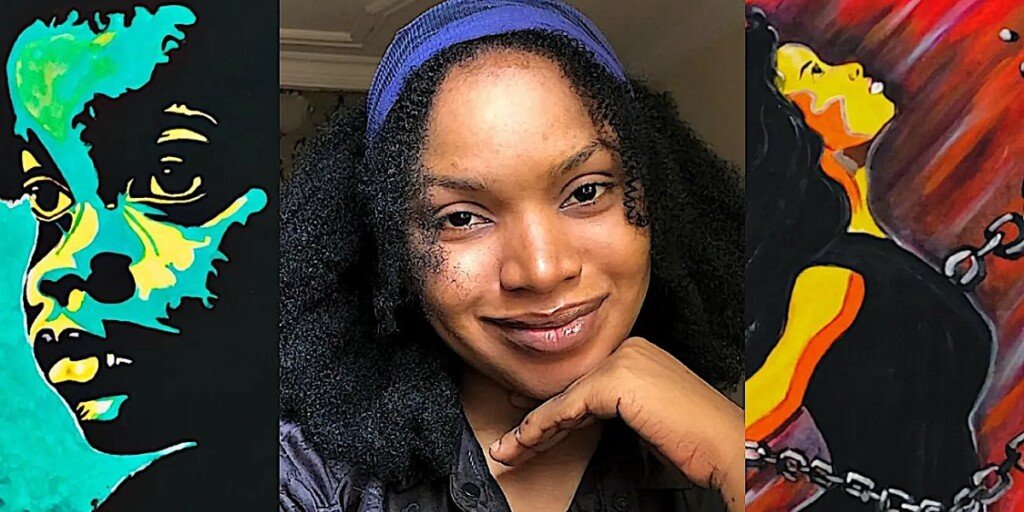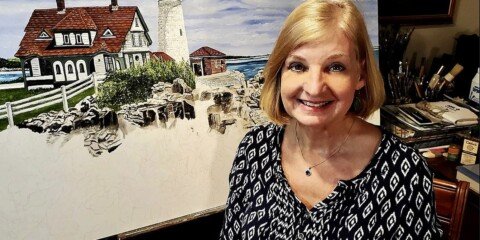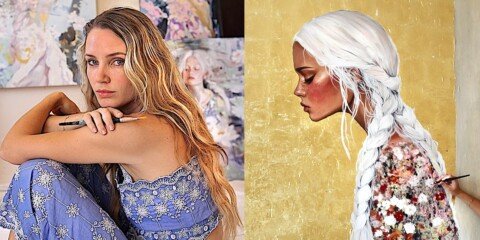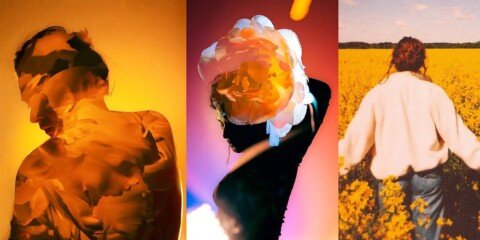Step into the vibrant and transformative world of Nguseer Rumunter (@remyta_Artworld), a self-taught visual artist whose passion for creativity knows no bounds. With a unique style honed through years of dedication and hard work, Nguseer’s art transcends traditional boundaries, merging the realms of fine art and interior design to create immersive experiences that resonate deeply with audiences. In 2021, she expanded her artistic journey into the world of interior design, crafting pieces that not only transform luxury spaces but also evoke emotions and spark meaningful conversations.
Her debut solo exhibition, “The Genesis,” held in June 2024, marked a powerful exploration of new beginnings and self-discovery, leaving an indelible mark on all who experienced it. Through her work, Nguseer invites us to see art as more than decoration — it’s a catalyst for dialogue, reflection, and change. Dive into this inspiring interview to uncover the heart and vision behind her extraordinary creations.
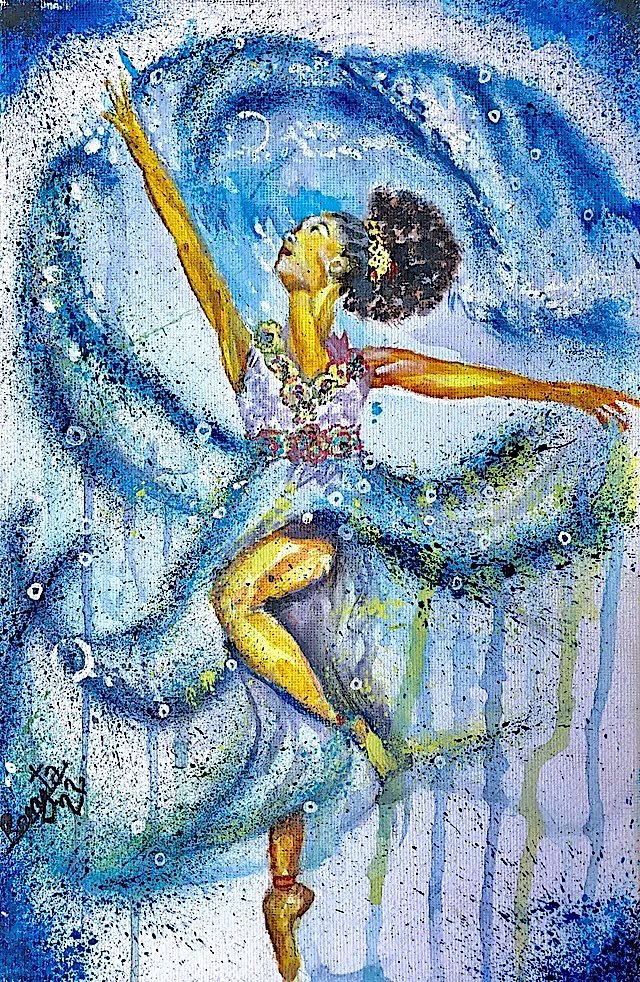
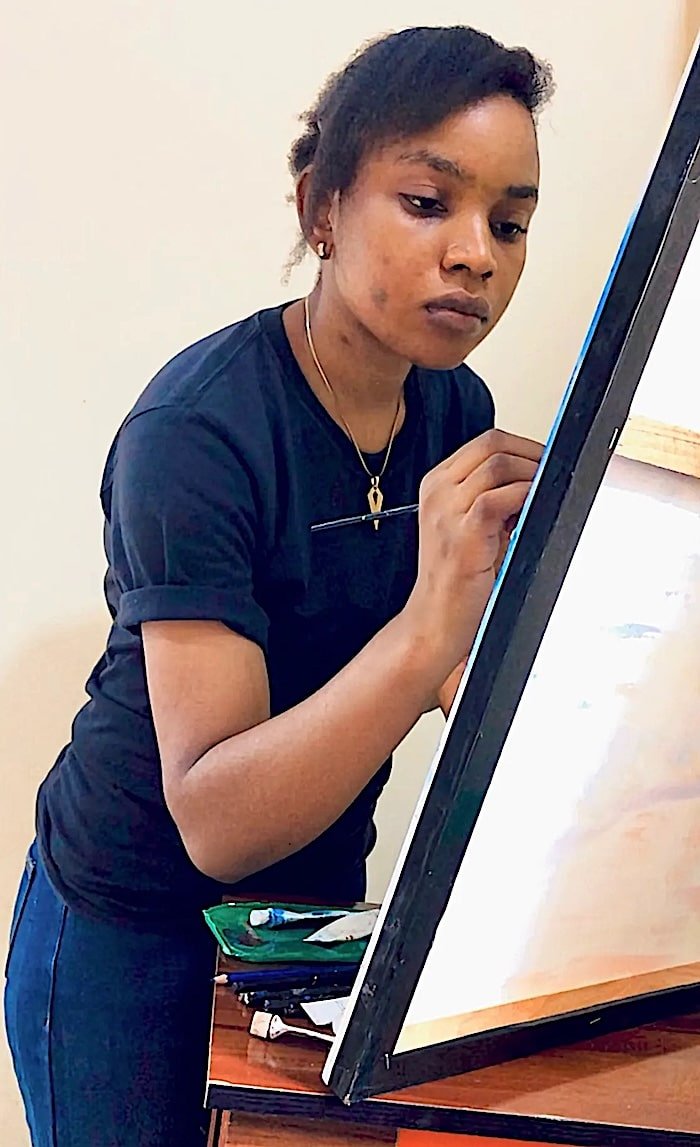
🟥 Can you share a bit about your background and the journey that led you to becoming an artist?
I am a self-taught visual artist, and my love for art started when I was a child. I used to draw flowers, trees, and cartoon characters, and it was just a hobby that brought me joy. As I grew older, I pursued a path in sciences in school and didn’t prioritize my art as much. However, during my university days, I took a technical drawing course that reignited my passion for art. It was like a spark had been lit again! I started dedicating a few hours every Saturday to practice and explore my creativity, and that’s when I fell in love with painting. It’s been an incredible journey, and I am grateful to have found my way back to something that makes me feel alive.
🟥 Was there a defining moment or experience that solidified your decision to pursue art seriously?
I remember a defining moment that solidified my decision to pursue art seriously. I was browsing Instagram and stumbled upon a video of an artist creating a beautiful portrait. What caught my attention was that he started painting from an unconventional angle — the chin. It challenged my traditional thinking that art had to follow a specific pattern to be excellent. Watching him let his passion flow through his pencil and having fun while creating was truly inspiring. That video struck a chord within me, and it was a turning point. I realized that I wanted to embrace my own unique style and creativity, and that’s when I made the decision to fully commit to developing my talent and becoming the best artist I could be.
🟥 Do you remember the first piece of art you created, and what inspired you to make it?
I still remember the first piece of art I created, which was a dancing ballerina. I must have been around 6 years old at the time. Although it wasn’t a perfect drawing, I was incredibly proud of it and loved every bit of it. My mom, who was an artist herself, was a huge inspiration to me. I would often try to copy her beautiful paintings, and the ballerina was one of her pieces that I attempted to recreate. To this day, I treasure the memory of that drawing because it marks the beginning of my artistic journey. It’s a reminder of how far I’ve come and how my love for art has only grown stronger over time.
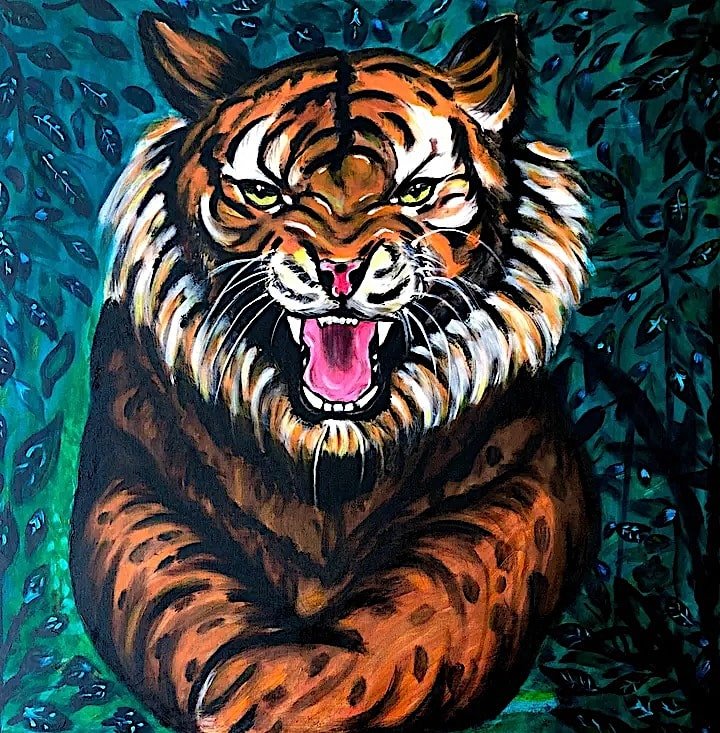
🟥 What inspires you the most when creating your art?
For me, art is a natural part of who I am, a gift that I am eager to share with the world. I find inspiration in the simple fact that I get to leave my mark on the universe, to tell my story through colors and emotions. Every day, I wake up feeling motivated to create something that will bring joy to others. The thought of someone seeing my art and feeling a connection to it is what inspires me the most. It’s a sense of purpose and fulfillment that drives me to keep creating and pushing the boundaries of my creativity.
🟥 Are there specific activities, rituals, or moments that fuel your creativity?
I don’t really have specific activities or rituals that fuel my creativity. Instead, I have learned to trust my instincts and let my creativity flow whenever it strikes. When I feel the urge to pick up a pencil, I let my imagination run wild and see where it takes me. I believe that there’s beauty in embracing the unknown and going with the flow. By trusting my instincts, I have found that I can create something meaningful and authentic, regardless of the time or circumstances.
🟥 How would you personally define art, and what deeper meaning does it hold for you?
To me, art is a powerful form of self-expression that transcends words and languages. It is a way to communicate emotions, ideas, and experiences that might be difficult to put into words. When I think of art, I think of the way it makes me feel — inspired, moved, and connected to something deeper and more meaningful. It reminds me that we all have the power to create something beautiful, meaningful, and impactful, regardless of our backgrounds or circumstances. Whether it’s a painting, a song, or a poem, art has the ability to touch our hearts, challenge our minds, and bring us closer together as human beings.
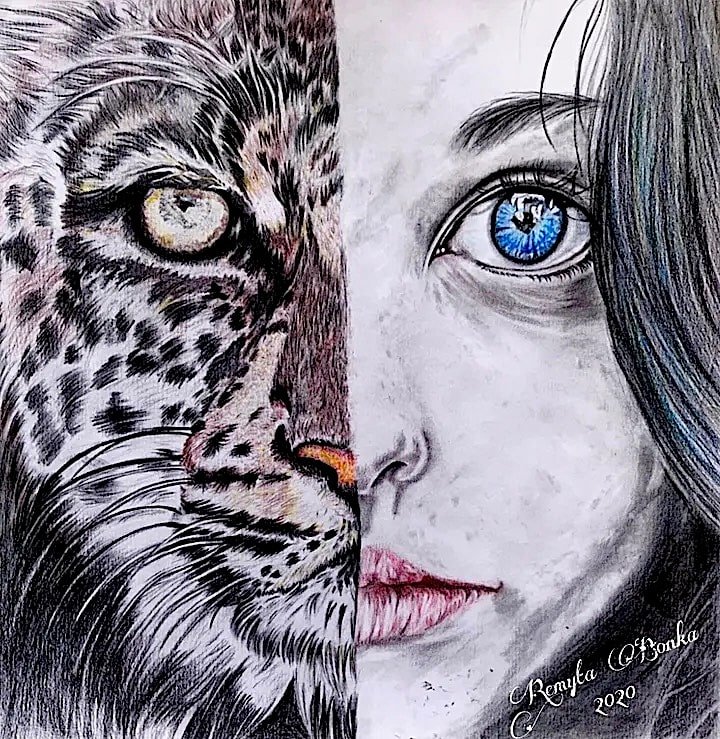
🟥 What part of the creative journey excites you the most — conceiving an idea, the act of creating, or finishing the piece?
For me, the most exciting part of the creative journey is conceiving an idea. I love the spark that ignites when I sit down and have a mental picture of what I want to create. This initial spark fuels my passion and motivates me to start bringing my idea to life. As I begin creating, I am driven by the anticipation of seeing my vision take shape, and ultimately, I look forward to having an excellent finished piece that I can be proud of.
🟥 Do you follow a structured plan when creating art, or is your process more spontaneous?
As a self-taught artist, I am more inclined to follow a spontaneous process when creating art. I have found that being flexible with my artistic processes allows me to produce my best work. I have observed that my best paintings emerge when I am being spontaneous and allowing my instincts to guide me. I have decided to stick to this method of creating art, as it enables me to tap into my creativity and produce art that feels authentic and true to myself.
🟥 What time of day do you feel the most creative, and why do you prefer that time for your work?
I am most creative at night. I prefer nighttime to create art because I feel more calm after going through the day. This calmness gives me an internal boost to clear my mind and solely focus on creating. Although I may not finish drawing or painting at night, I always start creating them at night. There is something about the evening hours that helps me tap into my creative energy and get into a flow state.
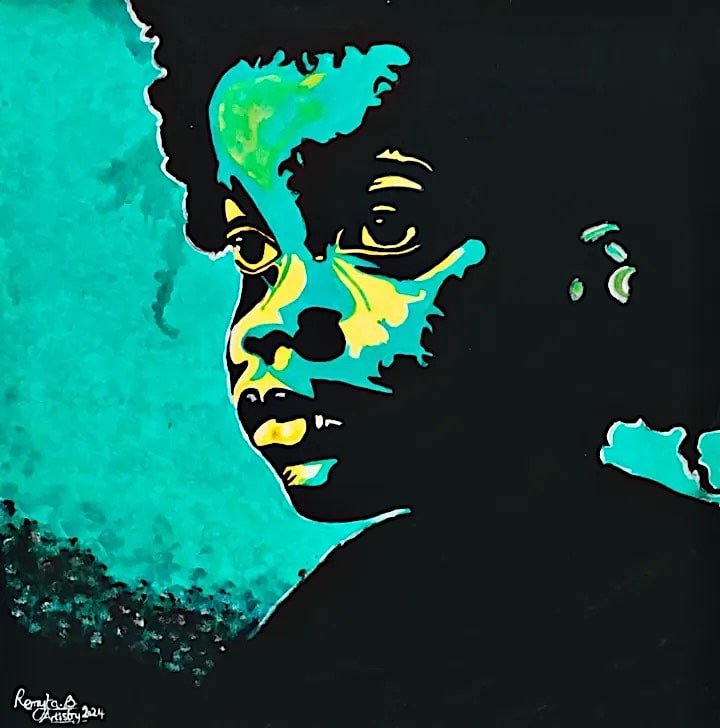
🟥 Do you listen to music while creating, and how does it influence your process?
Yes, I do listen to music while creating. I have a routine of listening to a particular song while painting for hours. This helps me focus better and energizes me, while also keeping me in the creative zone. The music seems to have a profound effect on my process, as it allows me to tap into my creative energy and maintain a consistent flow. I am able to fully immerse myself in the artwork, and the music becomes a catalyst for my imagination and inspiration.
🟥 Do you have any specific rituals or routines you follow before starting a new project?
Yes, I have a specific ritual that I follow before starting a new project. When I have cleared up my art space, I sit for a few minutes, close my eyes, and use my hand to gently rub through the surface of my canvas. This gentle gesture helps to prepare me to be ready to create. It is a calming and meditative process that allows me to center myself and connect with the canvas. After I have completed this ritual, I am then ready to start making art. This routine has become an essential part of my creative process, as it helps me to transition into a state of focus and inspiration.
🟥 What is the most challenging aspect of creating art, and how do you navigate those?
I am of the opinion that the most challenging aspect of creating art is when I am not getting my desired result midway through the process. This can be due to miscalculations or color mixups, which can be frustrating and affect my creative flow. When this happens, I pause and take a break to clear my mind. I then try to visualize another way of getting it right, which helps me to approach the problem from a fresh perspective. By taking a step back and reassessing my approach, I am able to navigate these challenges and find a solution that works. This process of reflection and re-evaluation is an essential part of my creative journey, as it allows me to learn from my mistakes and grow as an artist.
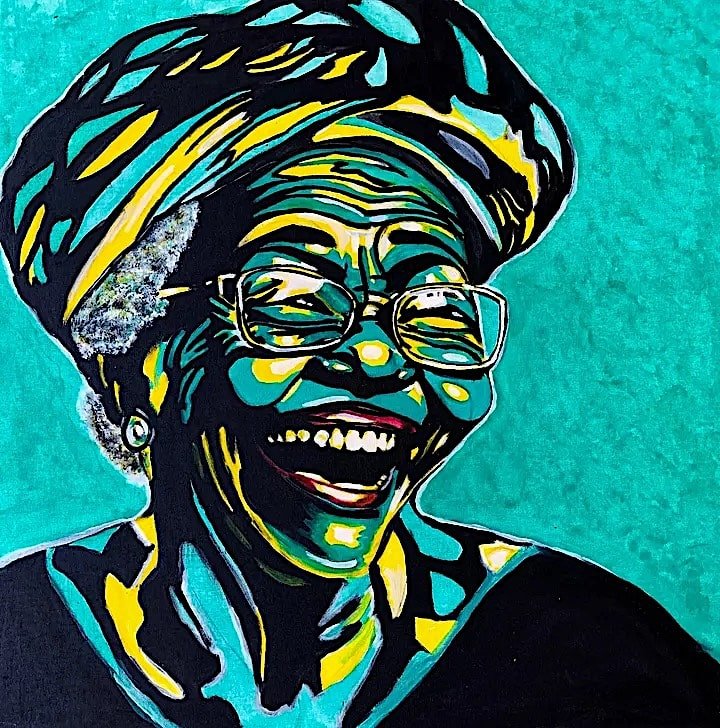
🟥 What keeps you motivated during times when creativity feels like a struggle?
What keeps me motivated during times when creativity feels like a struggle is remembering why I started creating in the first place. I think back to the core memories and experiences that sparked my passion for art, such as the joy of creating something from nothing and the sense of fulfillment that comes from sharing my work with others. When I feel stuck or uncertain, I try to focus on the process of creating rather than the end result, and I give myself permission to experiment and make mistakes. Additionally, I draw inspiration from the world around me, whether it’s nature, conversations with others, or my own emotions and experiences. By staying connected to my inner source of creativity and inspiration, I am able to push through challenges and stay motivated to keep creating.
🟥 Can you share an experience or lesson that contributed the most to your growth as an artist?
One experience that contributed the most to my growth as an artist was when I finally learned to let go of the need to compare my work to others. I remember feeling frustrated and stuck, constantly measuring my art against that of my peers and feeling like I didn’t measure up. But then I had a realization — every artwork is unique, and comparison is a surefire way to stifle creativity and originality. I made a conscious decision to focus on my own artistic voice and vision, rather than trying to emulate someone else’s style or success. This was a liberating experience, as it allowed me to tap into my own unique perspective and creative potential. This lesson has stayed with me to this day, and I continue to remind myself that the most important thing is to stay true to my own artistic vision and voice.
🟥 Is there a piece of advice you received that completely changed the way you create or think about art?
I am grateful to have had a tutor who once told me to “Trust the process”. This simple yet powerful advice has completely changed the way I create and think about art. It has helped me to gain confidence while creating, as I have learned to let go of my fears and doubts and trust that the process will unfold as it should. When I think about art, I am reminded that every artwork starts as a mess, but with patience, dedication, and trust, it can end up as a masterpiece. This mindset has allowed me to approach my art with a sense of freedom and experimentation, knowing that the journey is just as important as the destination. I have found that trusting the process has helped me to stay present and focused, and to enjoy the creative journey.
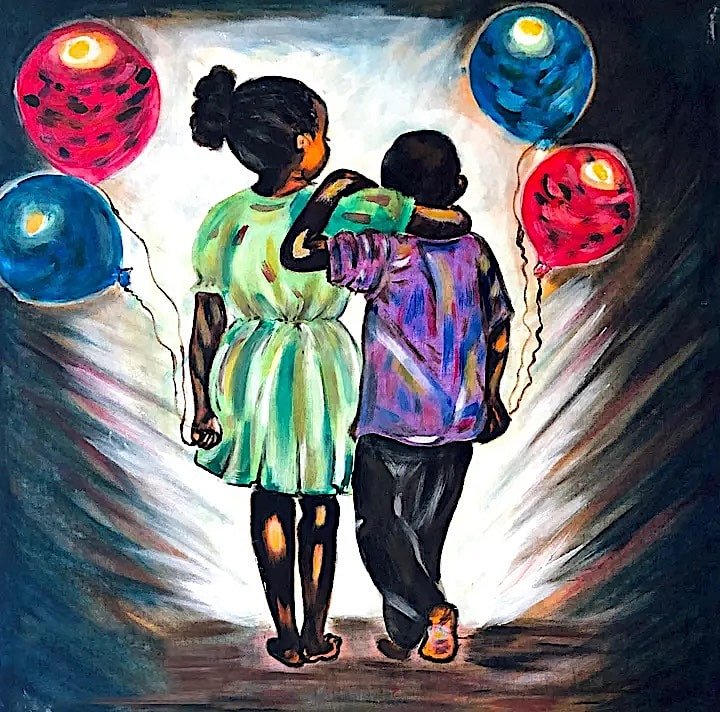
🟥 When you view a piece of art, what qualities or emotions do you look for?
When I view a piece of art, I look for uniqueness and authenticity. I am drawn to art that sparks a sense of wonder. I believe that art should be a reflection of the artist’s true voice and vision. I appreciate pieces that take risks and challenge my perspectives.
🟥 How do you perceive art’s purpose and its impact on individuals and society?
I believe art’s purpose is to inspire, to challenge, and to connect us. It has the power to touch our hearts, spark new ideas, and bring people together. Through art, we can gain new perspectives, develop empathy, and deepen our understanding of ourselves and the world around us.
🟥 In your view, what do concepts like “passion” and “uniqueness” represent in art?
To me, passion and uniqueness are the heart and soul of art. Passion represents the artist’s drive and dedication to their craft, while uniqueness embodies the distinct voice and vision that sets their work apart. Together, they create a powerful combination that inspires, resonates, and leaves a lasting impact.
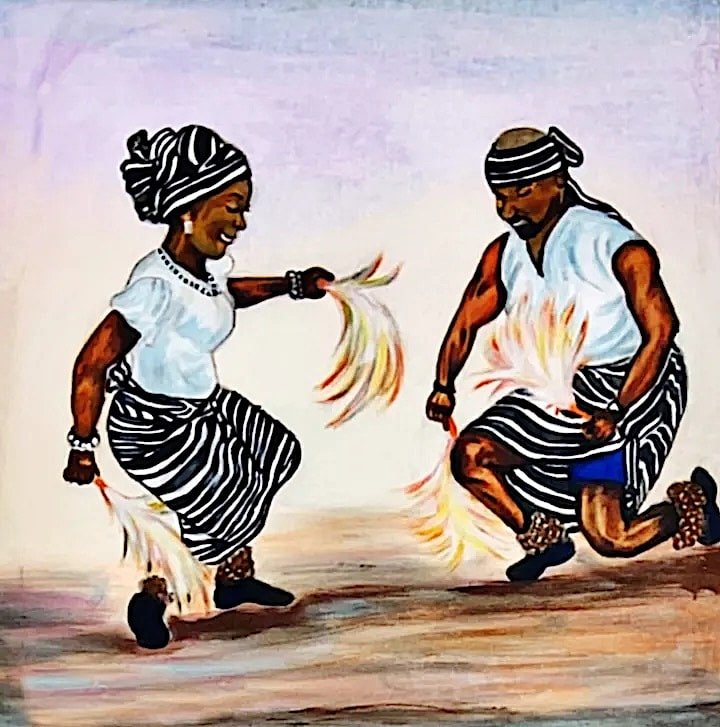
🟥 What are the non-negotiable essentials in your workspace?
I am particular about having certain essentials in my workspace, and there are a few non-negotiable items that I always have with me. My pencils, brushes, paints, erasers, and sketchbook are the foundation of my creative process, and I feel lost without them. I find that having these tools by my side allows me to capture ideas and inspiration whenever they strike, and I am able to work efficiently and effectively. My pencils and sketchbook are perfect for sketching and planning, while my brushes, paints, and erasers enable me to bring my ideas to life on canvas. I am able to express myself freely and fully, and I am grateful to have these essentials in my workspace. They are an integral part of my artistic expression, and I rely on them to create my best work.
🟥 Do you have a favorite tool or object in your studio that holds sentimental value?
I have a 5-year-old 4B pencil that is very dear to me. This pencil was part of my first set of B pencils that I purchased when I started buying art materials to pursue a career in the art world. I am attached to this pencil because it reminds me of how far I have come as an artist. It serves as a reminder of my humble beginnings and the progress I have made over the years. Whenever I look at this pencil, it gives me reassurance that I am capable of achieving my goals and becoming the best artist I desire to be. This pencil has been with me through countless sketches, drawings, and artistic endeavors, and it holds a special place in my heart. I have developed a strong emotional connection to this pencil, and it continues to inspire me to create and push the boundaries of my art.
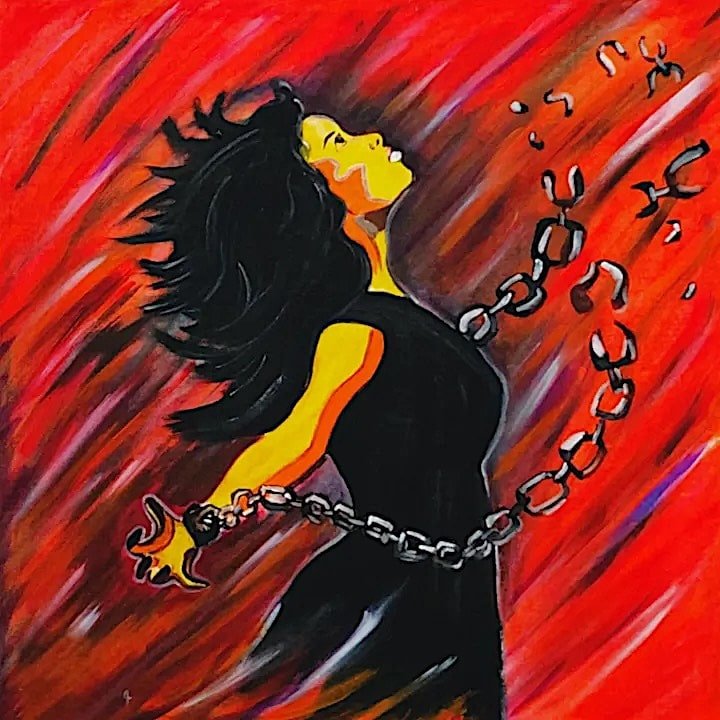
🟥 What’s the one thing you always need by your side while creating art?
The one thing I always need by my side while creating art is my sketchbook. I am always thinking about my next piece, and my sketchbook allows me to jot down ideas, sketch out compositions, and experiment with different techniques. It is my constant companion and my most trusted tool. I feel lost without it, and it helps me to stay focused and inspired throughout the creative process.
🟥 Who are the artists or people you admire the most, and why?
The artists I admire the most are Peju Alatise and Ty Bello.
Peju Alatise, whose art challenges societal norms and advocates for women’s rights, is a huge inspiration to me. Her installation ‘Flying Girls’ is particularly impactful, as it highlights the maltreatment of girls and inspires me to use art for empowerment and advocacy. I admire how her work amplifies women’s voices and stories in Nigeria, bringing attention to important social issues.
I also greatly admire Ty Bello, a Nigerian creative photographer and musician. Her unique perspective and talent have made significant contributions to the art world, and I appreciate how she uses her platform to promote Nigerian culture and creativity.
🟥 Imagine you could create a piece of art in collaboration with someone from history. Who would you choose and why?
I would love to create a piece of art in collaboration with Leonardo da Vinci. His exceptional painting of the Mona Lisa, with its captivating smile and air of mystery, is a masterpiece that I deeply admire. I am drawn to his perfectionism and attention to detail, which resulted in a work of art that continues to fascinate people to this day. Collaborating with him would be an incredible opportunity to learn from his masterful style and artistic genius . I am excited to think about what kind of unique and thought-provoking art piece we could create together.
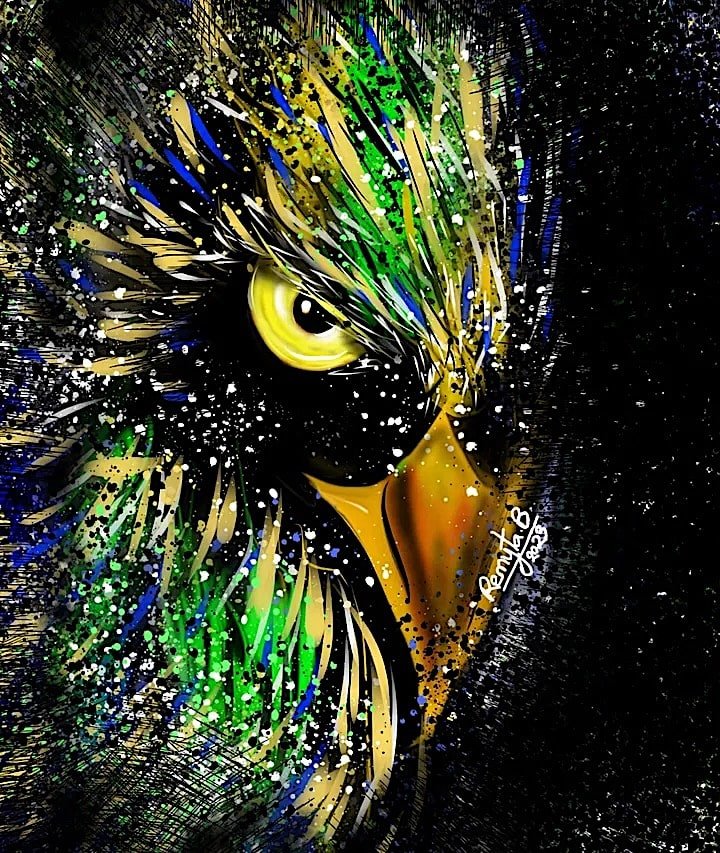
🟥 What’s your superpower?
My superpower is the ability to see the world from different perspectives and to find inspiration in everyday things.
🟥 What does success as an artist mean to you — recognition, impact, or something else entirely?
success as an artist means sharing my creativity with the world and having my artworks showcased in galleries, exhibitions, and other public spaces. It’s about taking the leap of faith and putting my work out there, where it can be seen, appreciated, and critiqued by others. I believe that when an artist’s work is hidden away, it is like a light hidden inside box with no one to see it. it is a missed opportunity for growth, connection, and impact.
🟥 Can you tell us about a piece of your art that holds a special place in your heart and why it’s so meaningful to you?
One piece of art that holds a special place in my heart is “Chords of Connection — Bonka’s Legacy,” an abstract guitar painting I created in honor of my late father, it’s a tribute to my father’s love of music .
A core memory I have of my father is him playing his red guitar all the time. The songs he sang, the melodies, and the cheerfulness that filled our home all warm my heart and remind me that he lived a worthy life. It’s a bittersweet feeling, but it’s also a reminder that his legacy lives on through me and the art that I create.
🟥 What are your dreams or goals for the future?
One of my biggest dreams is to establish an art organization that empowers young girls and women through artistic skills. I envision a vibrant and inclusive community where women can come together to learn, grow, and express themselves through art. This organization would provide a supportive and nurturing environment where women can develop their creative talents, build their confidence, and unlock their full potential.
I also dream of showcasing my art on the international stage, participating in prestigious exhibitions and events around the world, and sharing my unique perspective and artistic voice with a global audience.
🟥 How would you define a “creative person”?
A creative person is someone who seeks to do things differently, who thinks outside the box, and who relies on their instincts to bring new and innovative ideas to life. They are not afraid to take risks, challenge conventional norms, and push boundaries to create something truly unique and extraordinary. They are curious, open-minded, and passionate about their work, and they’re not satisfied with simply following the status quo. Instead, they’re driven to create something original, something that reflects their own unique perspective.
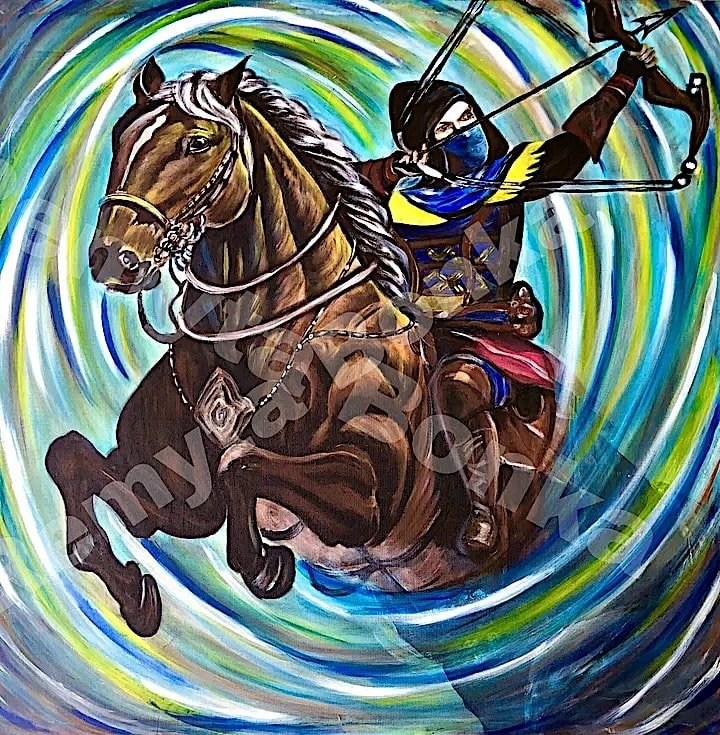
🟥 In your opinion, what are the positive and negative differences between being an artist today and being an artist a century ago?
In my opinion, one of the positive differences between being an artist today and being an artist a century ago is the availability of a wide range of art materials. This has made it easier for artists to create and experiment with different techniques, styles, and mediums.
On the other hand, a negative difference is the pressure to follow current artistic trends, which can sometimes lead to a loss of uniqueness and originality. Many artists today feel compelled to conform to certain styles or genres in order to gain recognition and success, which can stifle their creative freedom and individuality.
In contrast, artists a century ago were often held in high esteem because of the time, effort, and skill that went into creating their artworks using limited tools and materials. The fact that they were able to produce such high-quality work despite these limitations made their artworks highly valued and respected. However, a negative difference was that few artists had the privilege of sharing their artworks with a wider audience due to the lack of tools and technology to preserve and disseminate their work. Many talented artists remained unknown or underappreciated, and their works were often lost to time. Overall, while there are both positive and negative differences between being an artist today and being an artist a century ago, it’s clear that the artistic landscape has changed significantly over time, presenting both new opportunities and new challenges for artists.
🟥 In your opinion, what are the best and most challenging aspects of being an artist?
In my opinion, one of the best and most challenging aspects of being an artist is the ability to create something out of nothing. This power to bring ideas, emotions, and imagination to life is a unique gift that sets artists apart from others. It is a thrilling and intimidating prospect, as it requires a deep well of creativity, courage, and vulnerability. On one hand, it is exhilarating to know that you have the capacity to create something entirely new and original, something that can evoke emotions, spark conversations, and leave a lasting impact on others. On the other hand, it can be daunting to face the blank canvas, the empty page, or the unformed clay, and to trust that you have the skills and inspiration to shape something meaningful and beautiful from nothing.
🟥 What advice would you give to aspiring artists who want to build a meaningful career?
To aspiring artists who want to build a meaningful career, I would say that it is essential to remember that every artwork is unique and has its own value. One of the most important things you can do is to avoid comparing your work to that of other artists. Instead, focus on growing and developing your own creativity, style, and voice. Celebrate what makes your art distinctive and special, and don’t be afraid to take risks and try new things. By staying true to your own vision and artistic expression, you’ll be more likely to create work that resonates with others and brings you fulfillment. Remember, excellence is not about being better than someone else, but about being the best version of yourself. So, stay focused, keep learning, and trust that your unique perspective and talents will shine through in your art.
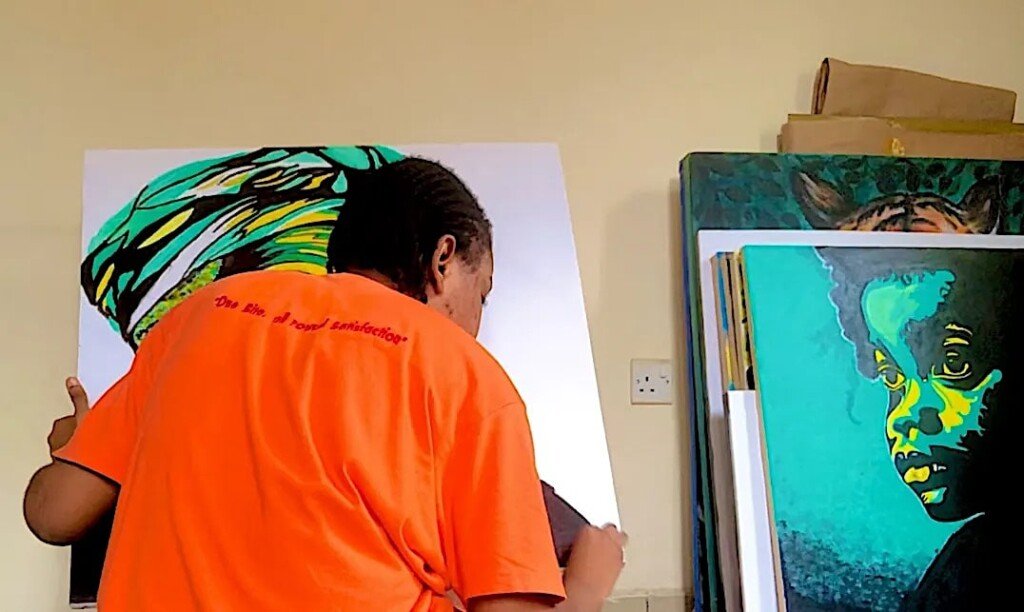
Relevant Links:
Facebook: facebook.com/remita.b.gavar
Instagram: instagram.com/remyta_bonka_artistry
Twitter: x.com/remyta_Artworld
Note: The answers given by the artist have been quoted verbatim without any editing to preserve the artist’s authentic voice for our readers.


